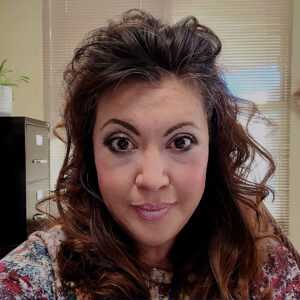I don’t want to imagine the devastation my school, Arrey Community Elementary in rural New Mexico, would be experiencing due to the pandemic if we weren’t a community school.
When Covid first hit, we were able to quickly provide computers, hotspots, and other internet services to students who needed help accessing online classes. We had also already established a food bank with connections to local grocery stores. Truckloads of food are delivered to the schools, allowing me to deliver much-needed food to 160 families—with more than 600 mouths to feed—each week.
And that’s just a piece of what our community school does. While our school has fewer than 100 students enrolled, we now provide services to over 180 families in the area. We connect parents with a wide range of community partners providing food, clothing, health care, and other forms of support. We’ve helped families access Covid vaccines and testing. I consider our school a hub for the broader community. Families finally have someone to ask and somewhere to go for help. And if we can’t provide it, we’ll connect them with someone who can.
That’s what makes the community school approach so transformative. Rather than only focusing on educating students, our school aims to be a system of care to support students, families, teachers, and the broader public. If a community requires it, then that’s what a community school provides, with services available to anyone. We don’t do that just because we think it’s the right thing to do. We do it because that’s what parents and teachers have said they need.
Community schools value parent and teacher voices. That’s one of the four “pillars” of the approach. Not only do community schools support the entirety of a student’s well-being, they bring together local nonprofits, businesses, and public services to offer a range of support and opportunities to students, families, and nearby residents. And they engage teachers, parents, and nearby residents in creating a shared vision for the school’s role in the community.
I regularly perform surveys to determine needs and make sure the resources parents want for themselves and their students are available. We encourage parents to get involved with the local school council, the PTO, and the Health and Resource Fair hosted on our school campus. For example, students, parents, and community members have named food insecurity as their most difficult problem. Parent involvement was then instrumental in getting the largest food bank in the state to make Arrey—a very small community—one of its distribution sites.
In other words, we’ve transformed the relationship our parents have with their school and broader community. I’ve experienced this transformation myself. I’ve learned more about my community in the year I’ve been community school coordinator than in the prior 12 years I worked for the school district.
Arrey Community Elementary isn’t alone. New Mexico now has 80 community schools, with 21 new schools established this year. The federal government is considering an increase in annual funding for community schools from $30 million to $443 million. I’d love to see more and more public schools become community schools, especially in these difficult times.
Yolanda Tafoya is community school coordinator and music teacher at Arrey Community Elementary in Arrey, New Mexico. She is a graduate of New Mexico State University with a degree in Community Health. She began working at Arrey Community Elementary in 2009 when her daughter started Pre-K at the school.

